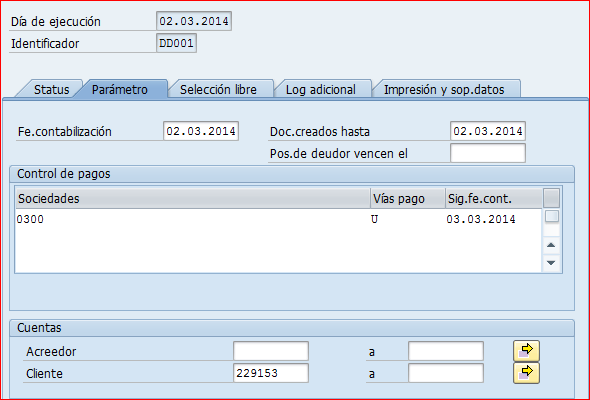
Step-by-Step Guide to Processing a Dunning Run in SAP
1. Access the Dunning Program (T-code F150)
- Open SAP and enter Transaction Code F150 in the command field. This will bring you to the Dunning screen, where you can set up and execute the process.
2. Define the Dunning Parameters
- Company Code: Enter the relevant Company Code to specify which company’s overdue invoices you are following up on.
- Dunning Area: Define the dunning area if you are targeting a specific section of the company.
- Document Date: Specify the date range for documents that you want to include in the run, like the posting date or due date of invoices.
- Dunning Level: You can select the dunning level to define how aggressive the reminders will be. Higher levels will indicate more severe dunning.
- Run Date & Identification: Enter the date for the Dunning Run and assign a unique ID to this run for easy tracking. The identification helps you to monitor the run’s progress later.
3. Create Dunning Proposal
- After entering the parameters, click on Proposal. The system will gather the open invoices for customers based on the specified criteria.
- SAP will automatically create a Dunning Proposal, which contains all customer accounts that meet the dunning requirements. This step does not yet send out the dunning notices but allows you to review the details before finalizing the run.
4. Review the Dunning Proposal
- Once the proposal is generated, review the logs for any potential issues.
- You can review the Dunning Proposal List to ensure the correct customers and invoices have been selected for dunning. Check for errors or exemptions (e.g., disputed invoices or payment agreements).
- Use the Edit Proposal option if necessary, to exclude specific invoices or customers that shouldn’t be included.
5. Make Adjustments (Optional)
- If any customers or open items need to be adjusted or excluded, you can do this in the proposal stage by selecting the Change option and modifying the proposal accordingly. This step ensures that only valid overdue items are included in the dunning run.
6. Execute the Dunning Run
- Once you are satisfied with the proposal, return to the initial screen and click Dunning Run to execute the process.
- SAP will now process the overdue invoices and apply the dunning notices according to the parameters and dunning levels you’ve set.
- The system will generate dunning notices for each customer based on their overdue invoices and the applicable dunning level.
7. Print or Send Dunning Letters
- After running the Dunning program, dunning letters are generated, which can either be printed or sent electronically (via email or EDI, depending on the customer setup).
- To print or send the dunning letters, use the Print/Email option from the SAP menu. You can also view the dunning letters before sending them to verify the information is correct.
8. Review Logs and Reports
- After the Dunning Run is completed, review the logs to ensure everything was processed correctly. You can analyze any errors or exceptions that occurred during the run.
- SAP provides detailed logs that allow you to monitor the customers that were contacted and see if any issues arose during the dunning process.
9. Monitor Dunning Process
- You can monitor the status of dunned items by reviewing the Customer Line Items Report (T-code FBL5N) or through Dunning History to check if customers have responded or made payments.
Best Practices:
- Adjust dunning levels cautiously: Be mindful when setting higher dunning levels, as they imply more assertive actions and could impact customer relations.
- Regular dunning runs: Set a routine schedule to execute Dunning Runs (e.g., weekly or monthly) to stay on top of outstanding invoices.
- Review customer disputes: Ensure that any disputed invoices or agreed payment plans are properly excluded from the Dunning Run to avoid errors or over-aggressive reminders.
By following these steps, you ensure that your overdue payments are managed efficiently, while maintaining customer relationships through a structured dunning process.
